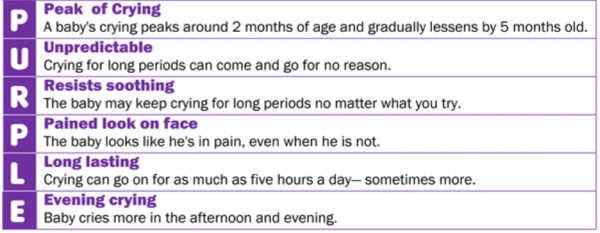Continuous Crying in Infants
Did You Know?
- Shaken Baby Syndrome (SBS) is a leading cause of child abuse deaths in the United States.
- Babies from newborn to four months old are at greatest risk of injury from shaking.
- Inconsolable crying is a primary trigger for shaking a baby.
Is Your Infant at Risk?
Statistically speaking, infants who are victims of Shaken Baby Syndrome are most likely to be:
- crying frequenly and/or inconsolable
- boys rather than girls
- born premature or with a disability
- one of a set of twins or a multiple birth
- victims of prior physical abuse or prior shaking
- babies, especially age 2 to 4 months, because they tend to cry more frequently and longer than older babies
- less than 1 year of age, but SBS has been reported in children up to 5 years of age
Who Would Shake an Infant?
Research shows that parents and their partners are most often the ones who shake a baby, and men are much more likely to do so than women. Parents or caregivers are more likely to shake an infant when they:
- are young and/or not prepared to cope with caring for a baby
- feel inadequate, frustrated or angry about the infant’s crying
- have limited anger management or coping skills
- have limited social support
- have an unstable family environment
- are isolated or depressed
- experienced neglect or abuse themselves during childhood
Why Does the Baby Cry So Much?
The Period of PURPLE Crying® is a phrase used to describe the time in a baby's life when they cry more than any other time. It was developed by the National Center on Shaken Baby Syndrome. During this phase of a baby's life, he or she can cry for hours and still be healthy and normal.
Pediatricians have learned that all babies go through this period —some babies can cry a lot and some far less, but they all go through it. When babies are going through this period they seem to resist soothing. Nothing helps. Soothing methods that have helped before don't comfort them. Parents often think there must be something wrong or they would not be crying like this.

Points to Remember
- Crying is normal for babies. Crying is one way babies communicate.
- Excessive crying is a normal phase in infant development. Most babies who cry a great deal are healthy and stop crying spontaneously.
- Prolonged, inconsolable crying peaks when the baby is between 2 and 4 months of age and generally lessens when babies are around 5 months old.
- You are not a bad parent if your baby continues to cry after you have done all you can to calm and comfort him or her.
- Remember, this will get better!
